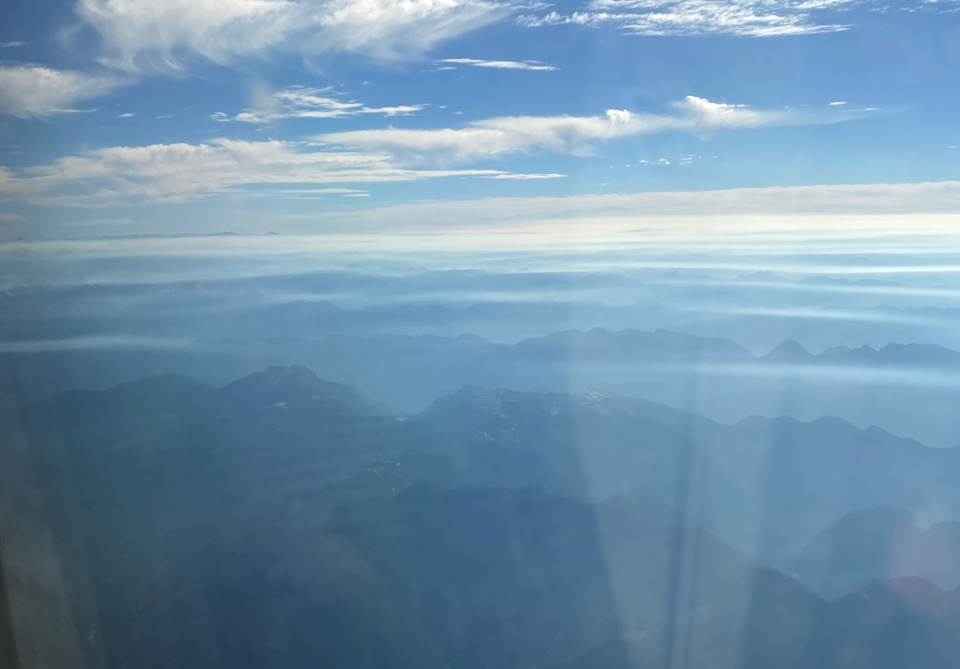I was lucky enough to sneak away to a wedding in Alberta last weekend.
It was one I never would have cancelled on, and not just because I was in the wedding party, but in the weeks leading up to it I’ll admit to feeling a spot or two of anxiety over the prospect of leaving Whistler right now—for a multitude of reasons.
The nature of this job is that it can be difficult to truly disconnect at the best of times, but sometimes there is just so much to do that the thought of physically going somewhere else and doing something like giving a speech at a wedding seems like an absurd fantasy.
And without going off on too many tangents, there is so much going on right now, at Pique and beyond, that the nervous, overthinking portions of my brain seemed to grow more powerfully intrusive as the big day drew nearer.
Especially as wildfires north of Whistler and Pemberton kept growing by the week, and with the rest of the province not faring much better.
Before I left, I looked around my apartment and considered, not for the first time, how devastated I would feel if a wildfire tore through while I was away and destroyed all my stuff.
It’s just stuff, and I do have tenant insurance, but it’s my stuff, and I’ve grown quite attached to some of it, ya know?
Of course, there would be little I could do to protect most of it from a raging wildfire, even if I were home, but I could at least grab the essentials on the way out the door and down the highway if worse came to worst.
We’ve dodged a bullet so far this year in Whistler, but it is alarmingly easy to start a fire in our current conditions, and seemingly even easier for it to spread.
And as devastating as it has already been in other parts of the province, fire season is far from over in Whistler.
Nevertheless, I left behind my stuff and got on a plane to Edmonton. (Fortunately, I don’t have any loved ones or pets in Whistler to worry about—or slow me down—in the event of an emergency. Sometimes you have to appreciate the small wins).
My flights weren’t impacted, but as I headed for the provincial border at 30,000 or so odd feet, I marvelled at the scope of B.C.’s wildfire woes far below. Mountaintops poked up from a thick, hazy blanket covering most of the province; the occasional plume of smoke could be traced to its origin on the ground, somehow looking completely static from such a distance, as if coloured in by a grey crayon, even if they were anything but on the ground.
When I landed in Edmonton, a TV camera crew was waiting to interview arrivals from Yellowknife, which, just the day before, began evacuating its population of nearly 20,000.
I considered, briefly, the logistics of such a mass movement: the coordination of traffic, hotels, and flights, and the heartbreak of 20,000 people leaving everything behind with no assurances they’ll have anything to go back to.
It was a grim, recurring theme throughout the four-day trip.
The day before the wedding, the rehearsal was delayed slightly as we waited for some of the bridesmaids.
When they arrived, we learned they had travelled from Kelowna, which, just the day before, was threatened by the surging McDougall Creek wildfire, forcing thousands to flee their homes.
Like the Yellowknife evacuees, they had left behind everything, not knowing what they would come back to—or when they might be allowed back (fortunately, their houses were not among the 60 or so structures lost to that blaze so far).
It’s one thing to watch the wildfires from an airplane above, or see the coverage on the news; it’s quite another to see the fear and uncertainty written plainly on the face of a real person you’re speaking to.
It makes it real, and fast.
In the midst of the worst wildfire season in B.C.’s history, the provincial government enacted a province-wide state of emergency on Aug. 18. As of this writing, there are about 35,000 people on evacuation order across the province, and a further 30,000 or so on evacuation alert.
And that’s just in B.C.
So far this year, more than 5,700 wildfires have burned an estimated 13.7 million hectares in Canada, forcing tens of thousands from their homes.
The full scope of the devastation—the heartbreak and the strain of leaving everything behind, possibly for good—is difficult to fathom.
We can’t look away. We have been extremely lucky so far this year, but Whistler is still just one careless cigarette, or one errant lightning strike away from a similar situation playing out here at home.
With that in mind, this week, Pique is re-running a feature we first produced in 2019, after Whistler completed its first multimodal evacuation plan.
It has been updated with fresh information from the Resort Municipality of Whistler, and should contain all the info you’ll need in the event of a wildfire close to home.
But if you don’t have time to read it, here are the highlights: sign up for Whistler Alert; pack a go-bag with all the essentials; and talk to your loved ones about what you’ll do in the event of an evacuation.
When the fires finally come for Whistler, the evacuation process will be hectic, to put it lightly. It is incumbent upon all of us to ensure we’re well prepared.
In the end, I was extremely grateful to make the wedding, as it offered me a perspective I’ve been missing of late—a timely reminder of the importance of making time for family, no matter how complicated and demanding our day-to-day work lives appear on the surface.
Some things are more important than material possessions.




